In the circular economy, materials are reused and virtually no waste is created. Most often, it is discussed in relation to architectural objects through the lens of material recycling and design for disassembly, but to get a glimpse into a fully-fledged version of a circular economy, it is worth noting urban-scale projects that hint at some level of self-sufficiency. The projects below explore the strategies used in circular urban environments, from architecture and construction materials to energy production, waste management and food production, as well as the processes and operations that govern these designs, providing insights into the conditions that inform circularity.
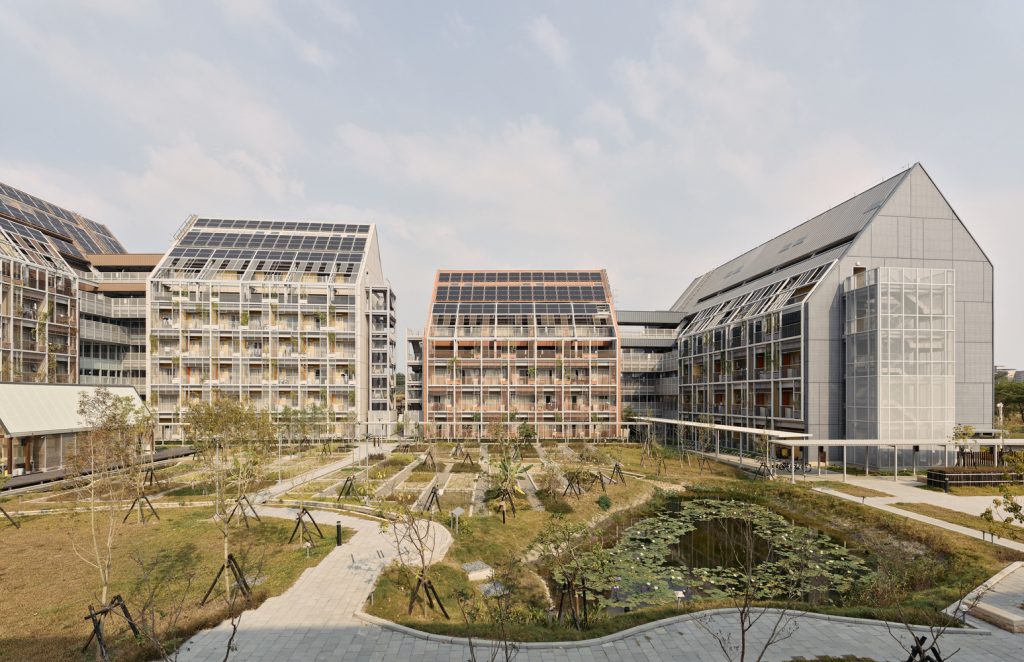
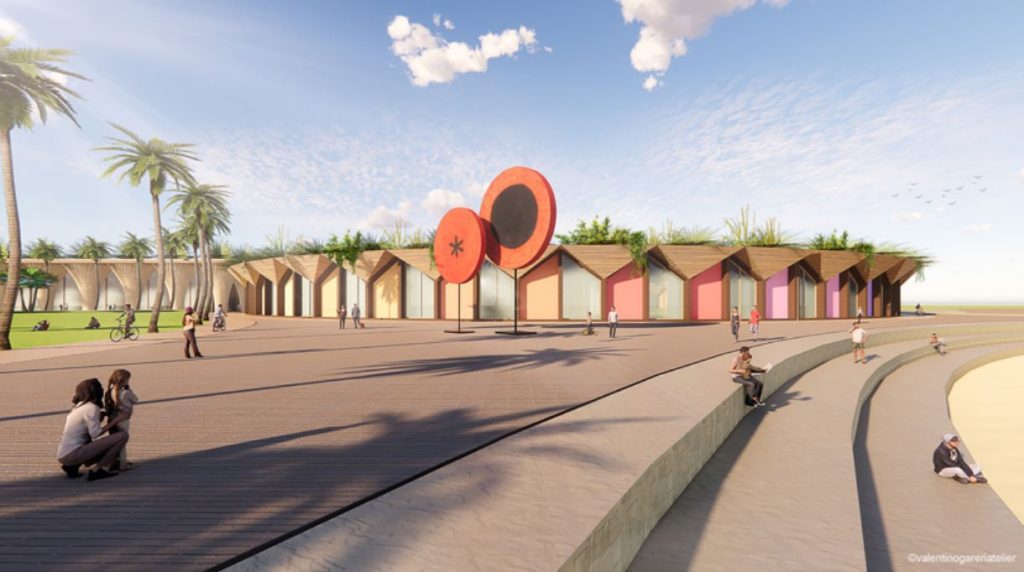
Sustainable village by Valentino Gareri Atelier
Valentino Gareri Atelier has designed a modular and sustainable village 3D printed from cacao waste for circular economy innovators in Manabi, Ecuador. Created for chocolate manufacturer MUZE cacao and non-profit organization Avanti, the project will operate as a self-sufficient cacao processing, chocolate factory, educational and research center, co-living, co-working, and cultural reference point for the local community and a carbon-neutral conscious tourism destination.
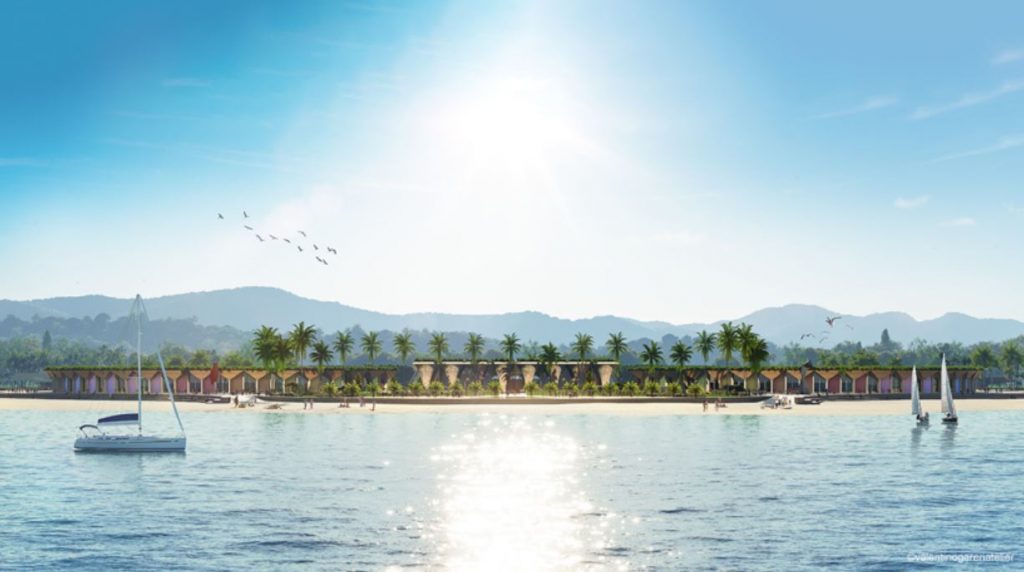
Sustainable village by Valentino Gareri Atelier
The circular economy core principles informed the design philosophy of the entire project. Modularity makes the village extendable, replicable, and adaptable to different sites, dimensions and geometries. It is also sustainable, made of local materials such as bamboo, timber, and 3D printed structures made of cacao shell waste biofilaments.

Sustainable village by Valentino Gareri Atelier
Informed by the local community and its traditions, the buildings’ design draws inspiration from the wide range of multi-colored Ecuadorian houses and from the cacao trees colorful fruits. The form of the buildings allowed the team to integrate water tank in the roofs and thus facilitate water collection.
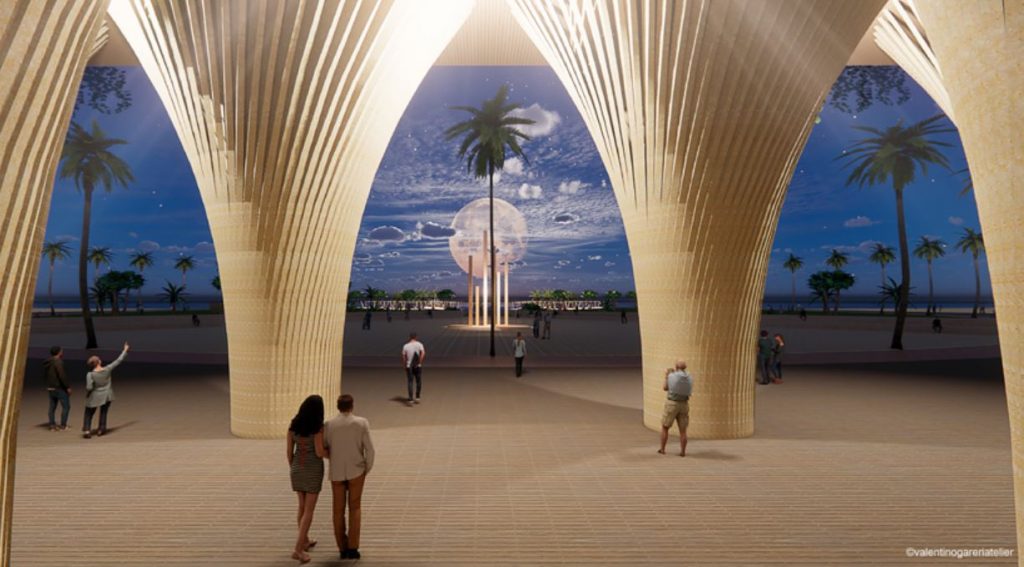
Sustainable village by Valentino Gareri Atelier
The village boasts a sustainable and smart infrastructure aiming to reduce carbon footprint of the cacao industry. A dense network of cycle-pedestrian boulevards are great for walking, while easy access of charging stations encourages using electric vehicles. In the meantime, cars and trucks transits are limited only around the factory and production area. All this demonstrates how a circular economy model helps generate increased income, reduce resource dependency, and minimize waste.

TaiSugar’s Circular Village by Bio-architecture Formosana (also header image)
Developed by Taiwan-based practice Bio-architecture Formosana, TaiSugar Circular Village is the first of its kind in Taiwan focusing on the concept of circular economy in the built environment. Taiwan Sugar Corporation (TSC) has taken a bold initiative to experiment with this new economic model, hoping it would be a role model for sustainable design area. This project is aptly placed within the master plan that was initiated by the government in 2016 with the vision to build a smart ecosystem city that co-develops with nature, as well as to build a people-oriented community and the necessary green life system.


TaiSugar’s Circular Village by Bio-architecture Formosana
Located within the Shalun Smart Green Energy Science City, Tainan, the Circular Village is made up of the three “Circular Blocks” where the living quarters are located. The C-House functions as the living room of the village, the E-House as the kitchen, while the C-Farm is described by the team as the garden where food is produced. Modularization makes fabrication assembly and disassembly more efficient and simplifies the stocks of building material banks.
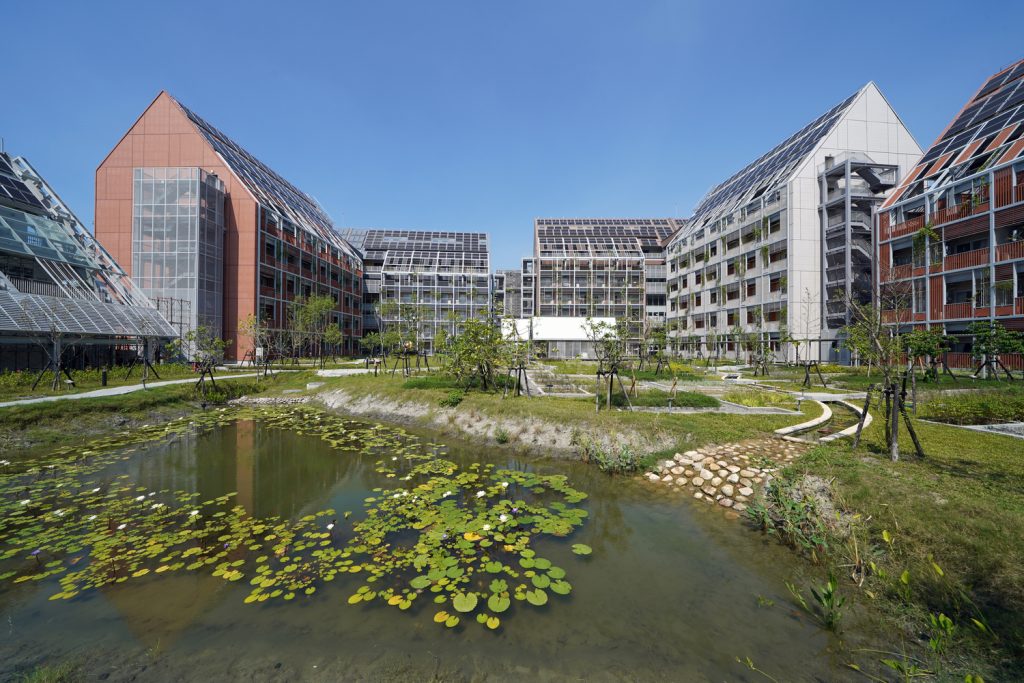

TaiSugar’s Circular Village by Bio-architecture Formosana
Some of the materials include recycled and green materials. The salvaged hardwood from TaiSugar’s old dilapidated buildings was used as the main structure for the E-House, while a fence on the ground periphery was made out of their recycled railway tracks. Wooden planks from the old buildings were treated and reused as the wooden frame for the pivoted door at C-House, and the façade and internal partition feature recycled LED glass insulation blocks.

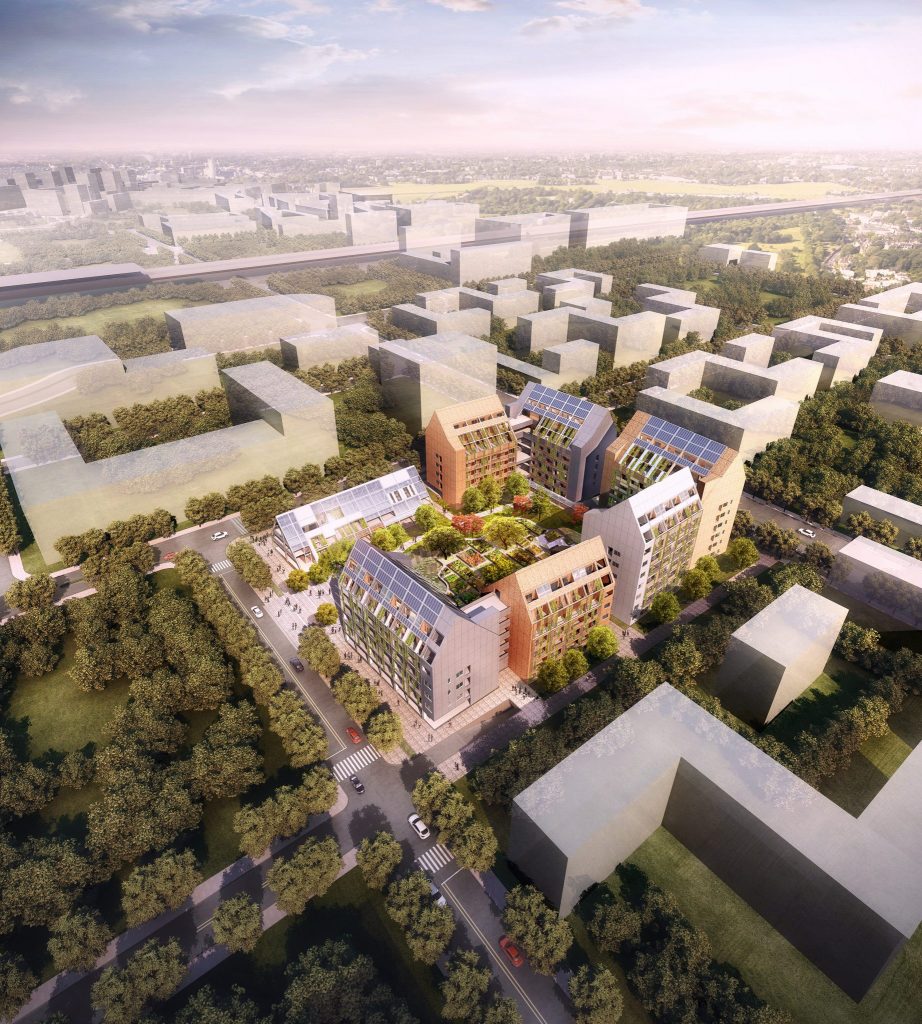
TaiSugar’s Circular Village by Bio-architecture Formosana
In order to design for disassembly, steel was chosen as the structural material rather than reinforced concrete. Modular building components such as prefabricated PC boards, metal louvers for the façade, prefabricated floor panels for slabs were used in conjunction with BIM software to comprise the BAMB database.

Ecopolis by TSPA
Berlin-based architecture firm TSPA (Thomas Stellmach Planning and Architecture) has teamed up with Wowhaus (Moscow), Nomura Research Institute, and the Scientific Research Institute of Ecology and Sustainable Management of Natural Resources to develop Ecopolis, an integrated diverse and circular city model for the Sakhalin region, in Russia.
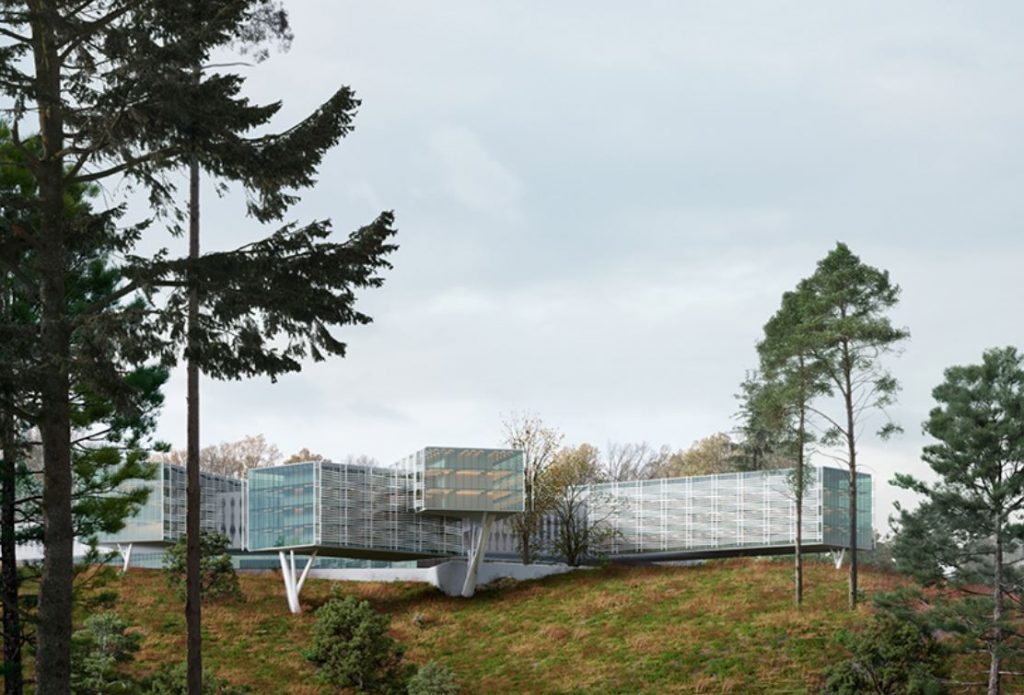
Ecopolis by TSPA
Taking advantage of the area’s strategic location, its relevance due to climate change, and its progressively important role in the global economy, the project proposes a new carbon neutral global hub of maritime transit and eco-city, providing highest standards of living for 35,000 inhabitants through the integration of circular systems and green energy.

Ecopolis by TSPA
The eco-city’s programming follows the topographical and natural features of the territory, developing on top of the hills. The compact city minimizes soil consumption and maximizes the areas dedicated to nature, including productive forests, recreational parks, and agriculture field. Its transparent boundaries blend the surrounding forests with the urban fabric, while biodiversity corridors cross the city and complement the built environment with green public spaces.
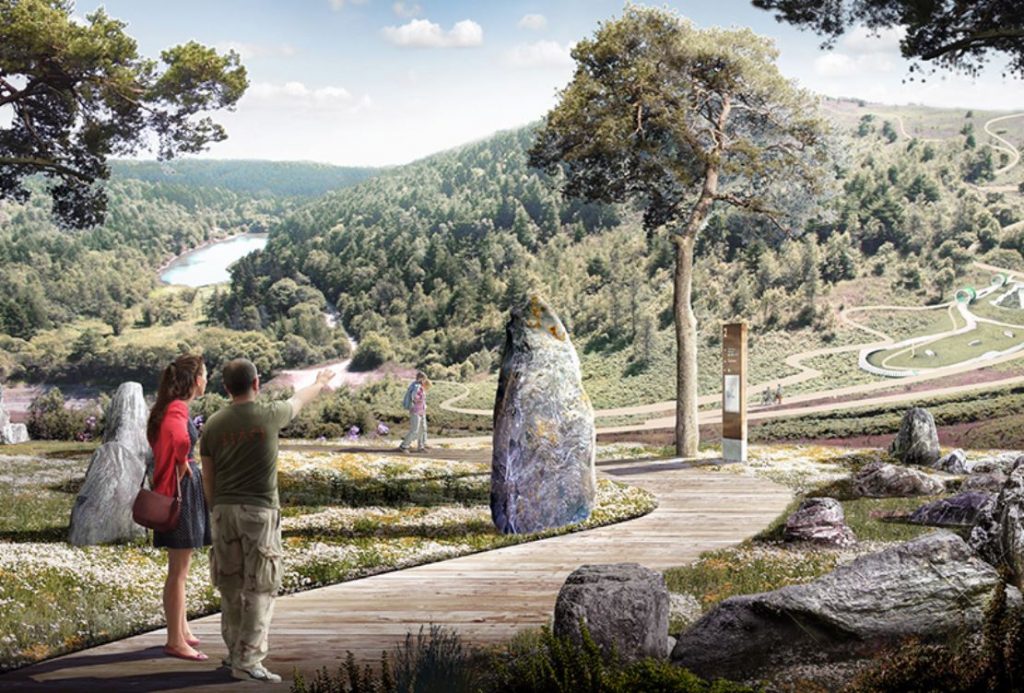
Ecopolis by TSPA
In Ecopolis, the existing production flows are connected to turn outputs into inputs of other processes. A hybrid system of distributed facilities scattered in the city is established to collect and upcycle inorganic waste produced by the neighboring city of Korsakov and the port. This strategy is combined with a centralized waste processing facility located on the north side of the area where organic waste is heated and converted into electricity. Part of the output energy flows back to the city and it partially feeds the production sites on the north side of the project area, namely the wood-based materials manufacturing plant, the agroindustry park, and the wastewater treatment plant. These facilities supply the city with construction materials, food, and clean water, reducing imported goods’ environmental and economic externalities.